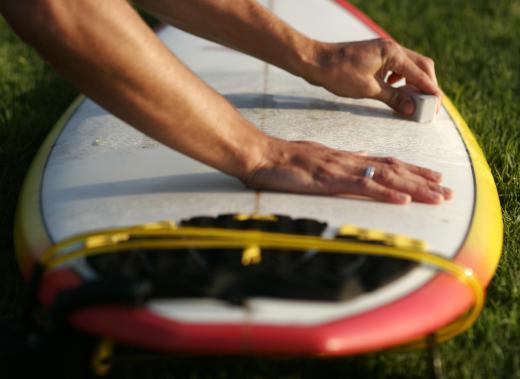Surfing has a romantic allure that some would argue is unmatched by any other sport. The sun, the sea, and a good curl distill everything a surfer needs into a few simple and fundamental elements. Well, that along with a good surf board.
A common mistake the hodad or newbie surfer tends to make is to buy a shortboard with thin rails and a narrow tail. A flashy little surf board will no doubt look very cool while standing at the breakwater checking out the swell, but it tends to lose its appeal when it won’t support the surfer’s weight without bogging down and pitching him or her off with every attempt to stand. According to many veteran surfers, the best surf board a new surfer can buy is a longboard with thicker rails and a wider tail. The goal is a surf board that floats the new surfer effortlessly, allowing the rider to practice standing up without flipping the board. A shortboard will discourage and exhaust all but the most dedicated student, ruining what could otherwise be a fun learning experience.

For the uninitiated, a longer surf board also makes it easier to catch a wave and ride it further. If you’ve ever watched an experienced surfer ride small or slow rolling waves on a shortboard, you’ve probably noticed him or her using cut-backs and other strategies to “work the wave” in order to ride it for any length of time. A longboard doesn’t require strategies and provides a stable platform for a new surfer to gain a feel for standing up on the surf board without having to work the board or the wave. New “soft” surfboards are constructed especially for beginners, with plenty of length, added buoyancy, and a dense foam-like surface that’s easier on the knees. These boards are economically priced and a good choice for a first surf board.

While a longboard and relatively small waves are a good combination for a new surfer, a shortboard, thin rails, and a narrow tail will allow an advanced surfer to perform tricks in nearly any type of surf. The smaller, lighter surf board is faster and more mobile, but requires greater skill to control. These three-finned boards are called thrusters and are great for surfers who have already found their balance and can jump up quickly on the board in one smooth, effortless motion. Though boards are classified somewhat arbitrarily, a surf board up to about 6’6” (2 meters) in length is considered a shortboard. Medium boards go from there to approximately 8’ (2.4m), and longboards reach all the way up to 10’ (3m) or longer.

A surf board can cost anywhere from 200 US dollars (USD) to 1,000 USD or more. Used boards are commonly available at surf shops, as surfers trade their boards in for smaller or newer boards. Advanced surfers often own several boards for different kinds of surfing or wave conditions. Old school surfers prefer longboards for nose-riding, while the popular trend is towards narrow shortboards and creative freestyle surfing.
If you are new to surfing, ask the dealer or an instructor for help in choosing the right surf board. For a beginning surfer who has not yet acquired skill, the main determining factors should be a combination of weight and height. A longboard should generally be three feet (about one meter) taller than the rider, though weight can modify the formula. If you get a surf board that makes it easy to master balance, you can trade it in and advance much more quickly.
